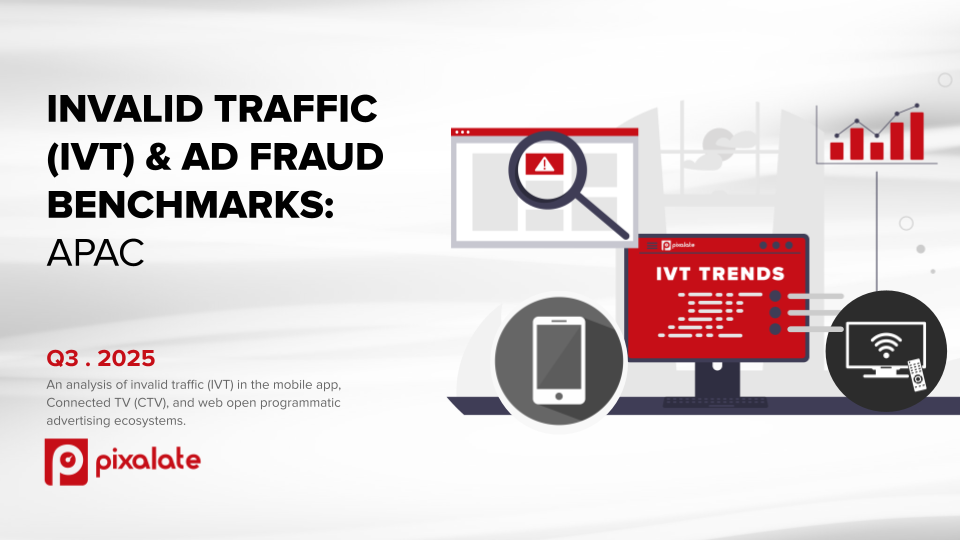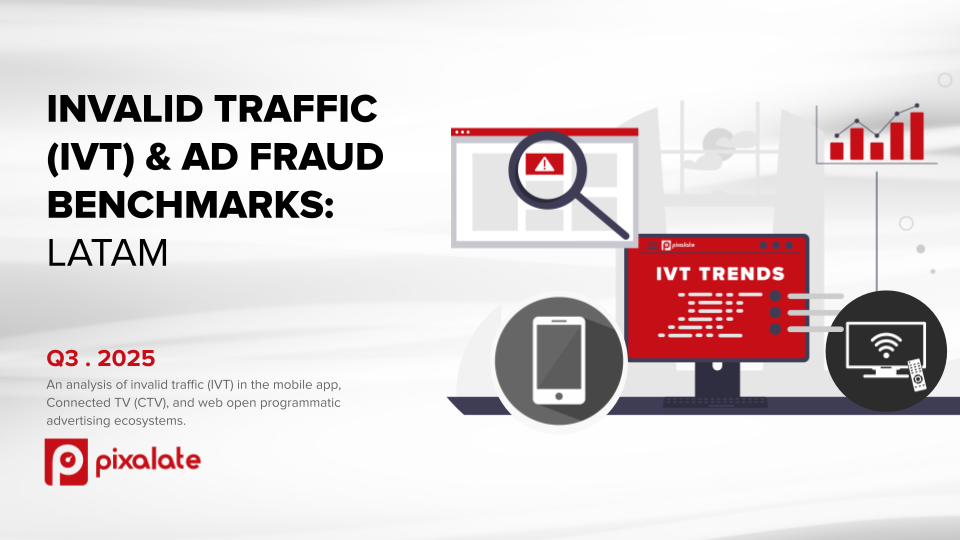LONDON, October 14, 2025 -- Free-form and free-flowing Bundle ID data and the absence of Bundle ID standardization across CTV platforms pose the most critical measurement blind spot - and its most lucrative fraud vector.
Malicious actors exploit free-form Bundle ID formats to fabricate app identifiers, impersonate legitimate applications, and inject fraudulent inventory into programmatic supply chains undetected.
Pixalate eliminates this vulnerability with the market's first and only Bundle ID-to-App-Store-ID mapping system. With the addition of all 4,630 LG Content Store applications to its CTV app database, Pixalate now delivers authenticated Bundle ID mappings that equip CTV buyers and inventory quality teams to verify app authenticity, measure fraud risk, and remove unauthorized LG CTV inventory on their network and campaigns.
- New LG Bundle ID Database: Search any LG Store app by name or Bundle ID
- Verify LG Bundle IDs: Validate non-standard Bundle IDs, mapped to official App Store IDs
- See Ad Fraud Levels on LG Apps: Sort and rank 4,630+ LG apps by exposure to ad fraud (invalid traffic, IVT)
- Estimate Monthly Active Users (MAU): MAU, retention rate, and session data by DMA
- Identify Delisted Apps: Apps removed from the official LG Content Store
- Evaluate Brand Safety: Based on description and content analysis
In LG traffic (Apr–Sept 2025), Pixalate observed 3,915 Bundle IDs in the programmatic ad bid stream; 9% matched or were mapped to real App Store IDs. The rest were fraudulent: Either mobile-only (45%), wrong CTV platform (25%), or malformed (21%). These fraudulent Bundle IDs accounted for 34% of LG open-programmatic spend, according to Pixalate’s estimates.
Features: LG Apps in Pixalate’s CTV App Database (Media Ratings Terminal)

Data Points Table:
| Attribute |
Description |
| IVT |
The overall percentage of Invalid Traffic (IVT), including ad fraud |
| Risk Overview |
Pixalate's unique advertising risk assessment based on blended risk factors including brand safety, invalid traffic and ad inventory. |
| Bundle ID Verification |
Share of Voice (SOV) of Bundle IDs utilized in the programmatic bid stream, mapped by Pixalate to the official App Store IDs |
| Spoofing Risk |
Risk of spoofing in this app (low/medium/high) |
| Content Brand Safety Risk |
Risk factors (low/medium/high) to advertiser Brand Safety broken down by both in-app content including adult content risk, violent content risk, and AML image analysis. |
| Delisted App |
A flag that indicates whether the app was delisted from the app store or not.true indicates the app was delisted from the app store. |
| Delisted Date |
App delisted date from app store. Format, YYYY-MM-DD |
| App Privacy Policy |
Indicates whether an app-specific privacy policy is maintained. Apps which do not maintain a privacy policy may be of higher risk to advertisers and sellers. |
| Authorized & Unauthorized Sellers |
The contribution of various sell side platforms to programmatic ad impressions sold on the app. |
| MAU |
The estimated number of Monthly Active Users (MAU). |
| Inventory by DMA |
The estimated volume of programmatic ad impressions broken down by Designated Market Area (DMA). |
These metrics are available via Pixalate’s Ad Trust & Safety API and through the Media Ratings Terminal dashboard. Contact Sales for a live demo.
Data Coverage & Scale
- LG Database: Pixalate’s MRT contains ratings for 4,630 LG Content Store apps, including 1,491 with an app-ads.txt file; 3,915 LG programmatic bid stream Bundle IDs classified
- Fraudulent CTV Bundle IDs: Between April and September 2025, Pixalate observed 3,915 Bundle IDs in the programmatic ad bid stream where the User Agent indicated an LG device. Of these, only 9% matched official App Store IDs or were mapped to official App Store IDs by Pixalate. The remaining 91% were fraudulent, broken down into three categories:
| % of Bundle IDs |
Reason Code |
Description |
| 45% |
Mobile-Only Bundle ID |
The declared Bundle ID matches a mobile/tablet app’s official Bundle ID, but does not have a matching analog in a CTV app store, which may be a signal of fraudulent/spoofed/invalid traffic. |
| 25% |
Incorrect CTV Platform |
The declared Bundle ID matches a known App Store ID using Pixalate’s “bundle mapping” technology, but was found to be the incorrect CTV platform, which may be a signal of fraudulent/spoofed/invalid traffic. |
| 21% |
Malformed String |
Even after processing with Pixalate’s “bundle mapping” technology, the declared Bundle ID doesn't fall into any of the prior definitions, and often does not resemble a standard CTV Bundle ID |
- Ad Spend on Fraudulent LG Bundle IDs: 34% of ad spend on LG devices (April-September, 2025) went to fraudulent CTV Bundle IDs (vs. Roku 4%, Fire TV 4%, Apple TV 6%, Samsung TV 5%)
- 20+ LG Device Types in the Programmatic Ad Bid Stream: The 86 inch LG 86UP8770PUA was the most common LG device type detected in the programmatic ad bid stream, accounting for 32% of open programmatic ad spend on LG devices from April-Sept. 2025, per Pixalate’s data. Other common LG device types observed included LG OLED55BX9LB, LG M506X, LG 32LM6300PLA, LG 32LK6100PLB, and LG 43UM7000PLA
- LG’s Share of Voice: 7% of global CTV open programmatic ad spend went to LG devices Q2 2025; North America (7%); EMEA (14%); APAC (3%); LATAM (12%)
Availability
All data is available via Pixalate’s Ad Trust & Safety API and/or the Media Ratings Terminal.
Contact Sales to learn more.
About Pixalate
Pixalate is a global platform specializing in privacy compliance, ad fraud prevention, and digital ad supply chain data intelligence. Founded in 2012, Pixalate is trusted by regulators, data researchers, advertisers, publishers, ad tech platforms, and financial analysts across the Connected TV (CTV), mobile app, and website ecosystems. Pixalate is accredited by the MRC for the detection and filtration of Sophisticated Invalid Traffic (SIVT). pixalate.com
Disclaimer
The content of this press release, and the LG Content Store’s integration into the MRT, reflect Pixalate's opinions with respect to factors that Pixalate believes may be useful to the digital media industry. Any data shared is grounded in Pixalate’s proprietary technology and analytics, which Pixalate is continuously evaluating and updating. Any references to outside sources should not be construed as endorsements. Pixalate's opinions are just that, opinions, which means that they are neither facts nor guarantees. Pixalate is sharing this data not to impugn the standing or reputation of any entity, person or app, but, instead, to report findings and trends pertaining to programmatic advertising activity across mobile apps in the time period studied.







